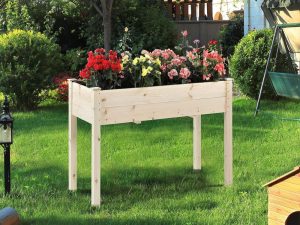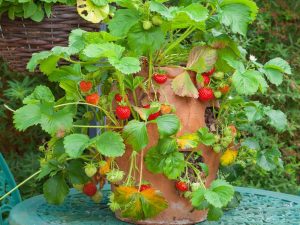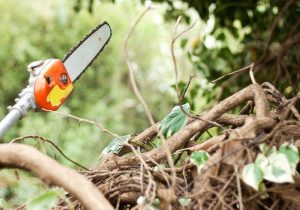Last Updated on April 23, 2024 by teamobn
If you’ve bought potted plants or vegetable starters from a garden center, then you’ve probably wondered about those tiny white pellets in the potting soil. They look like bits of Styrofoam, but they’re not.
That’s perlite, a non-toxic, lightweight, mined volcanic rock. The pellets improve soil structure and each is about 70 to 75 percent silicon dioxide.
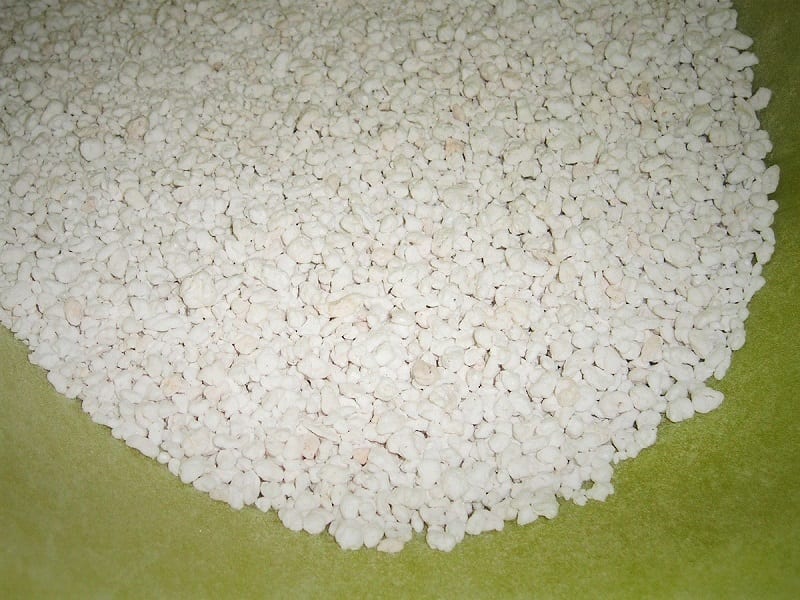
Perlite Basics
Contents
Perlite is fundamental in promoting healthy plant growth by enhancing soil drainage and aeration. The unique porous surface of these pellets is adept at retaining essential water and nutrients, while also facilitating the drainage of excess moisture. This balance is crucial for maintaining soil health and preventing waterlogging, which can lead to root diseases.
In addition to moisture management, the structure of the pellets enhances air circulation within the soil. This is vital as plants primarily absorb oxygen through their roots. Adequate aeration ensures that the roots can efficiently access the oxygen they need, supporting robust growth and vitality.
These properties make this medium incredibly versatile. It is suitable for use with various soil types, enhancing both light and heavy soils by improving their structure. Gardeners can incorporate the medium directly into the soil or use it as a top layer on propagation beds and seed starting containers. This adaptability makes it an ideal choice for diverse gardening applications, from indoor potted plants to outdoor vegetable gardens.
By using perlite, gardeners can provide a healthier environment for their plants, characterized by improved root health and overall plant vigor. Whether integrating it into garden beds or using it in specialized plant mixes, the medium serves as a multi-functional additive that enhances soil conditions, promoting healthier and more productive plants.
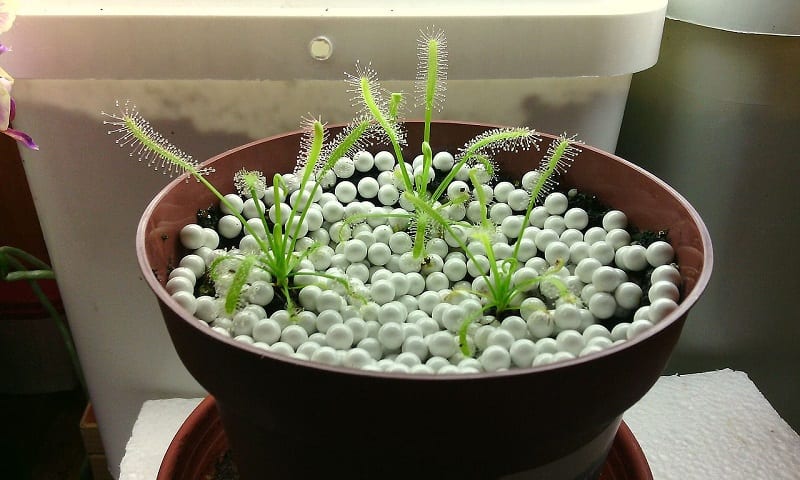
Fine vs Coarse Perlite
When selecting perlite for gardening purposes, one of the key considerations is the granularity of the medium. The choice between fine and coarse depends on specific gardening needs, as each type offers distinct benefits for different applications.
Fine Perlite
Fine perlite is characterized by its small, compact granules. This type is particularly effective for seed starting and rooting cuttings where a more compact medium that retains moisture slightly more than its coarse counterpart is beneficial.
It’s ideal for use in seedling mixes because it helps keep the mix uniformly moist, thereby promoting germination and growth. Gardeners often prefer fine when dealing with plants that require a steady moisture level without the risk of waterlogging.
Coarse Perlite
Coarse perlite, with its larger, chunkier particles, is best suited for applications requiring improved drainage and air porosity. It’s an excellent choice for orchids, succulents, and other plants that are prone to root rot or need excellent drainage.
The larger particles allow for greater air flow around the roots, which is essential for the health of these types of plants. Additionally, coarse is often used in container gardening and potting mixes for plants that benefit from a more aerated root environment.
Selecting the right type of perlite can significantly impact the health and growth of your plants. Fine medium works wonders for delicate seedlings and cuttings, while coarse option is crucial for plants requiring robust drainage and airflow. By choosing appropriately based on your specific gardening needs, you can optimize the benefits that perlite offers.
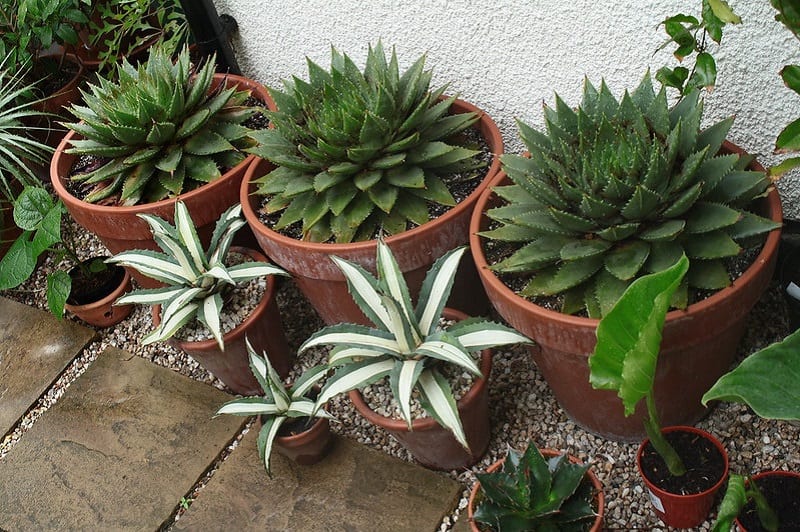
How to Use Perlite in Your Garden
For seed starting, combine one-part perlite, one-part vermiculite, and one-part peat moss or coco coir in a tub or bucket. Water the mixture down to keep it uniformly moist.
For your basic potting mix, use 1-part perlite and 1-part vermiculite for every 6 parts of peat moss. If you have leftover ingredients, you can save them for next season, or make a potting mix for your transplants.

In your garden beds, apply a 2-inch layer as you spread on compost and other soil amendments in the spring. Work it into the top 6 to 12 inches of soil. One application will help keep your soil light and loose for several years.
Perlite is also an excellent medium for storing bulbs over winter, keeping them fresh for planting in spring. Just set alternate layers of the medium and bulbs, cover with more of the medium and store in a cool, dark, dry place.

Guide to Buying Perlite
When purchasing perlite for gardening, knowing what to look for can significantly enhance the effectiveness of this soil amendment in your gardening projects. The right medium can improve soil aeration and drainage, making it vital to choose a quality product that suits your specific needs.
Quality and Purity
Ensure the medium is pure and free from contaminants. High-quality perlite should not have any added chemicals or impurities, which could negatively affect plant health. Check the packaging for any indications of purity and non-toxicity, ensuring it’s safe for use in organic gardening if that’s a priority for you.
Granule Size
Perlite comes in various granule sizes, from fine to coarse. Choose the granule size based on your gardening needs—fine granules for seedlings and cuttings, and coarse granules for better drainage and aeration in container plants and specific garden beds.
Packaging and Quantity
Consider how much of the medium you need. It is available in various package sizes, from small bags suitable for houseplant enthusiasts to large bulk bags for extensive gardening projects. Make sure the packaging is sturdy and sealed well to prevent any spillage or moisture from entering, which can compromise the quality of the perlite.
Brand and Price
Some brands specialize in gardening products and may offer higher quality ones than generic or lesser-known brands. Compare prices between different retailers and brands, but remember that the cheapest option may not always be the best in terms of quality. Opt for a reputable brand that is known for its gardening supplies.
By focusing on these key aspects when buying perlite, you can ensure that you select a product that will effectively meet the needs of your gardening projects, contributing to healthier soil and plants.
Safety and Handling Guidelines for Perlite
When using this volcanic glass medium in your gardening projects, it’s important to handle it safely to minimize health risks, particularly to your respiratory system. Following proper safety guidelines ensures that you can enjoy the benefits of this soil alternative without unnecessary exposure.
Protective Gear
Wear protective gear when handling the medium. A dust mask or respirator will prevent inhalation of the fine dust particles that the material can release. Additionally, use gloves to protect your hands from dryness and goggles to avoid eye irritation from airborne dust.
Proper Storage
Store bags of the medium in a dry, covered area to prevent them from getting wet, which can lead to caking and reduced effectiveness. Ensure that the storage area is well-ventilated and away from areas where dust might accumulate and become a respiratory hazard over time.
Handling Techniques
When pouring or mixing the soil alternative, do so gently to minimize dust creation. If possible, moisten it slightly before use to reduce dust. Always handle in well-ventilated areas, preferably outdoors, to disperse any dust that does become airborne.
Disposal
Dispose of used medium properly. It is generally non-toxic and does not degrade, so it can be safely added to compost or used as a drainage layer in pots. Ensure it is free from any plant debris or disease before repurposing or disposing of it to avoid spreading issues to other parts of your garden.
Minimize Exposure in Enclosed Spaces
When working with this soil amendment in enclosed spaces, ensure adequate ventilation. Open windows or use an exhaust fan to help reduce dust accumulation in the air. This precaution is especially important in greenhouses or indoor potting areas.
Educate on Proper Use
Familiarize yourself with the specific uses and benefits of the volcanic glass medium. Understanding when and how to use this material effectively can prevent improper application that might lead to excessive dust generation or inefficient use.
Monitor for Signs of Irritation
While working with this soil conditioner, monitor yourself for signs of respiratory or skin irritation. Prolonged exposure to dust may lead to discomfort or health issues. If symptoms occur, seek a well-ventilated area and consider consulting a health professional.
Safe Mixing Practices
When incorporating the medium into soil mixes, combine materials in a controlled and slow manner to prevent vigorous dust clouds. Pre-wetting the ingredients or mixing them in a slightly damp state can also significantly reduce airborne particles.
Regular Cleaning
After handling the soil conditioner, clean all tools and work surfaces to remove any residual dust. This practice will help maintain a clean work environment and reduce the likelihood of dust spreading to other areas.
By adhering to these safety and handling guidelines, you can ensure a safe and effective use of the medium in your gardening activities, protecting both your health and the environment.
Conclusion
Many other soil amendments yield benefits similar to perlite. For instance, vermiculite, pumice, biochar, and rice hulls also help to aerate soils and ensure better drainage. Each has its ideal conditions for use.
Perlite is best when you want moderate water retention, excellent drainage, and aeration with long-term effects, says Meredith Cherry of Grow Organic. It is the preferred choice for seed starting and propagation.
More often, however, you get the best results from correct combinations of perlite, vermiculite, and other soil amendments.



